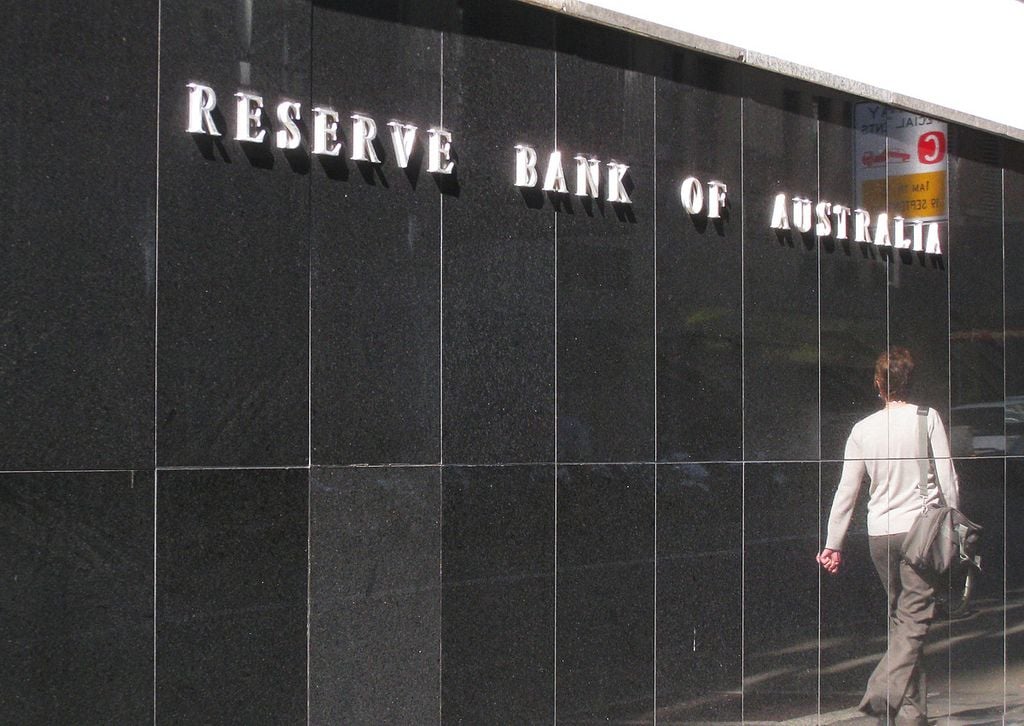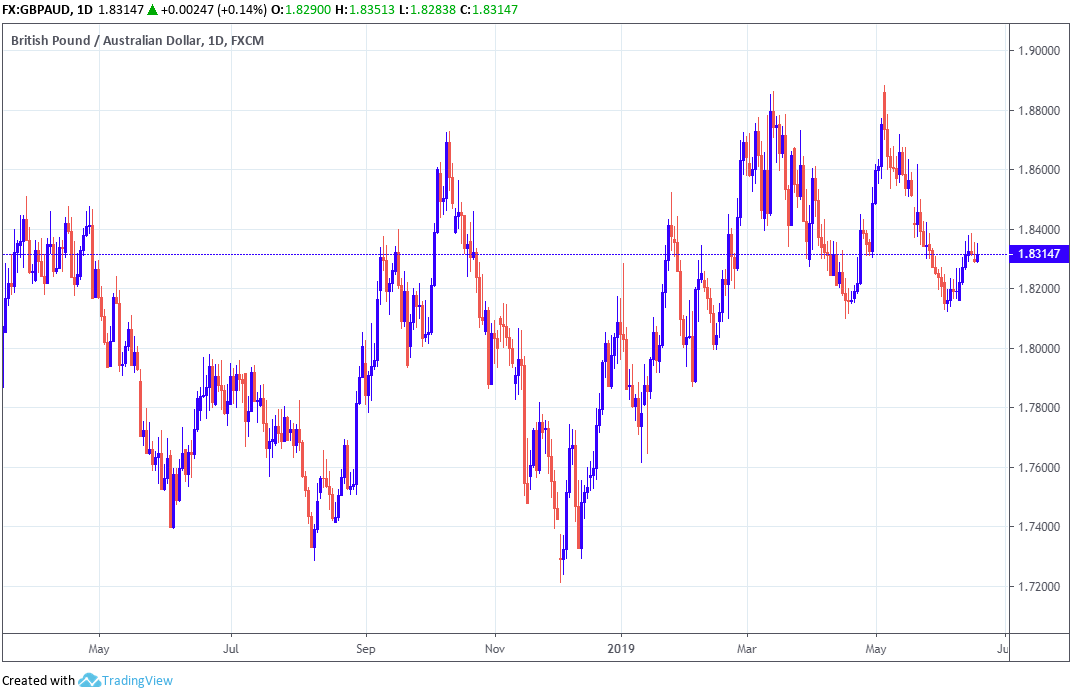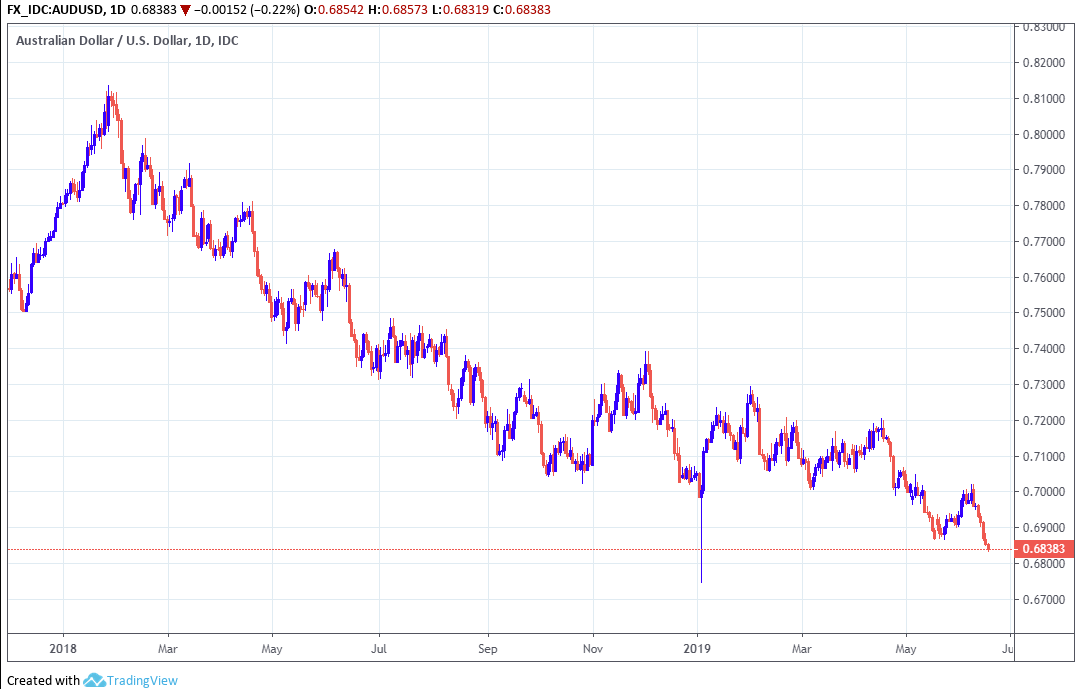Australian Dollar Wounded by RBA Minutes but Analysts Look for Respite from Fed Cuts
- Written by: James Skinner

Image © Newtown Grafitti, Reproduced under CC Licensing.
- AUD weakens after RBA minutes suggest more easin on way.
- More cuts coming as RBA set to follow path of market pricing.
- RBA may be entertaining idea of quantitative easing programme.
- ING looks for AUD weakness, Commerzbank eyes rescue by Fed.
The Australian Dollar was on its back foot Tuesday after minutes from the latest meeting at the Reserve Bank of Australia (RBA) suggested that further interest rate cuts and significant policy action could be taken before the year is out, although some analysts still see light at the end of the tunnel for the Aussie.
RBA policymakers agreed in June that it's "more likely than not" that a further easing of monetary policy would be required to get inflation back within the 2%-to-3% target band, before hinting that further significant rate cuts as well as unconventional easing measures might be in the pipeline.
The RBA minutes say the bank's modestly upbeat outlook for the economy assumes interest rates will follow the path implied by market pricing, and pricing in financial markets implied at the time of the meeting that one more rate cut was highly likely before the year is out.
"A dovish set of RBA minutes has modestly added to already firm expectations that the RBA will be cutting again later this year (71% probability now attached to a cut at the 6 August meeting). But perhaps the 1Q19 house price data, falling at 7.4% YoY, is more alarming. AUD to stay soft, especially versus JPY," says Chris Turner, head of FX strategy at ING Group.
RBA policymakers cut the Australian cash rate to a new record low of 1.25% in June, citing years of below-target inflation and a deteriorating outlook for the labour makret and economy that was putting attainment of the target even further from view.
However, since then, markets have become more aggressive in their expectations for interest rate cuts up ahead. Pricing in the overnight-index-swap market on Monday put the RBA cash rate at 0.78% by year-end, which implies a further two interest rate cuts this year.

Above: Pound-to-Australian-Dollar rate shown at daily intervals.
Furthermore, Tuesday's minutes suggest the RBA might be considering its own version of the quantitative easing programmes (QE) used in the U.S., UK and Europe in recent years, which is bad news for the Aussie Dollar.
"Members agreed that it was more likely than not that a further easing in monetary policy would be appropriate in the period ahead. They also recognised, however, that lower interest rates were not the only policy option available to assist in lowering the rate of unemployment," the RBA minutes say.
QE would see the RBA buying Australian government and corporate bonds with newly created money, which would help the economy by forcing down bond yields as well as the Australian Dollar. Central bankers argue that lower yields would lift economic activity, lower unemployment and raise inflation by incentivising more borrowing.
It's debatable as to whether the policy ever actually worked in either the U.S., UK or Eurozone but implementing it would enable the RBA to be seen taking action on Australia's weak inflation pressures without having to cut its interest rate all the way to zero or below.
QE would come at a cost to the Aussie Dollar, which is sensitive to capital flows. Those flows tend to move in the direction of the most advantageous or improving returns, but QE would significantly reduce the interest return that investors get for holding Australian assets instead of others.
"We expect the current weakness in AUD to be relatively short‑lived if we are correct about the USD declining following Wednesday’s FOMC meeting," says Kim Mundy at Commonwealth Bank of Australia. "Given our expectations for the FOMC to also provide a dovish assessment of the outlook for interest rates, there is a risk AUD/USD is able to lift again and re‑test 0.6900."

Above: AUD/USD rate shown at daily intervals.
Monetary policy decisions are only normally made in response to movements in inflation, which is sensitive to growth, but impact currencies because of the influence they have on capital flows and their allure for short-term speculators.
Capital flows tend to move in the direction of the most advantageous or improving returns, with a threat of lower rates normally seeing investors driven out of and deterred away from a currency. Rising rates have the opposite effect.
The Aussie has been badly damaged in the last year by the combination of a downbeat outlook for domestic interest rates and a U.S. Federal Reserve that lifted its own rate four times in 2018, taking it up to 2.5%. The Bank of Canada (BoC) and Bank of England (BoE) have also lifted rates.
However, the Federal Reserve is now expected to begin cutting its interest rate before the year is out, which some analysts say will throw a lifeline to the Australian Dollar even if the Reserve Bank of Australia does go ahead and cut its own interest rate further.
"The RBA minutes have poured new oil into the interest rate speculation fire. This should weigh on the AUD in the short term, but only until the Fed follows suit," says Thu Lan Nguyen at Commerzbank. "I fear the AUD depreciation trend will come to an abrupt end as soon as the Fed begins to actively turn the interest rate wheel down, not least because the Americans have much more room to turn – due to a higher interest rate level – compared to their Australian counterparts."
Thu Lan Nguyen and the Commerzbank team forecast the AUD/USD rate will finish the 2019 year at 0.74, which is significantly above the current 0.6844 level.
Time to move your money? Get 3-5% more currency than your bank would offer by using the services of foreign exchange specialists at RationalFX. A specialist broker can deliver you an exchange rate closer to the real market rate, thereby saving you substantial quantities of currency. Find out more here.
* Advertisement




